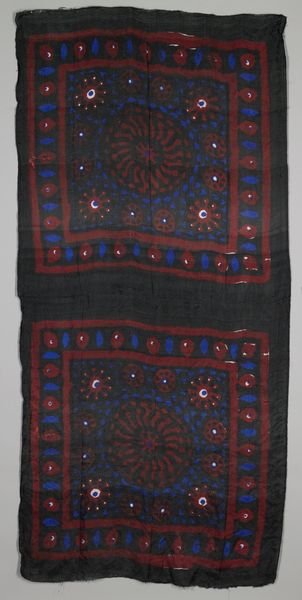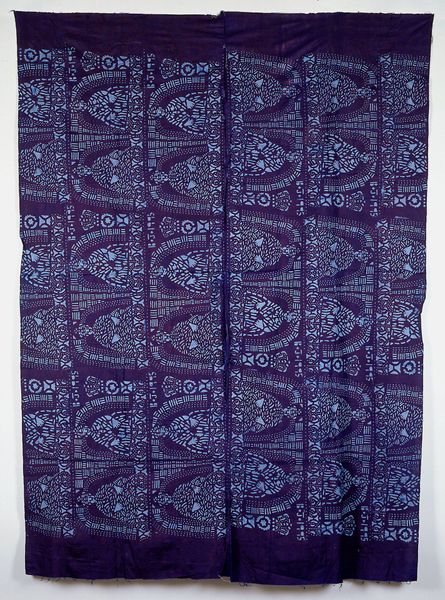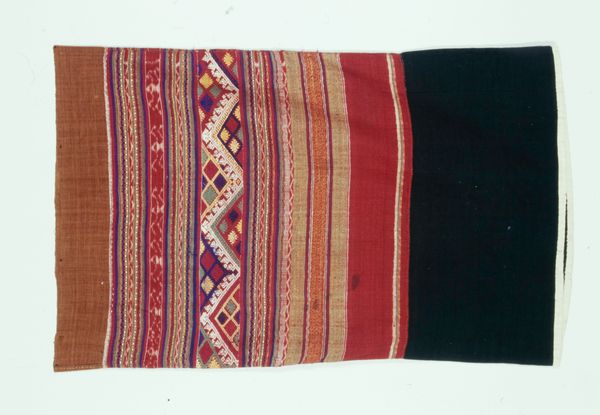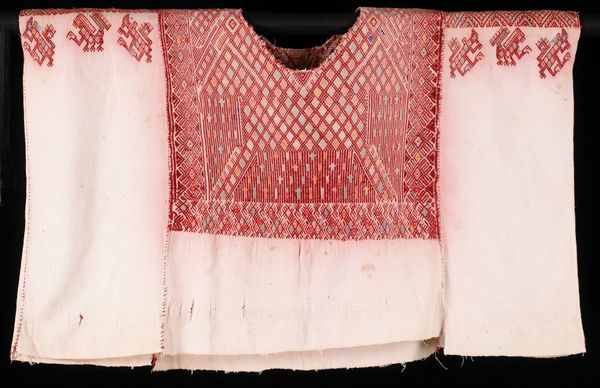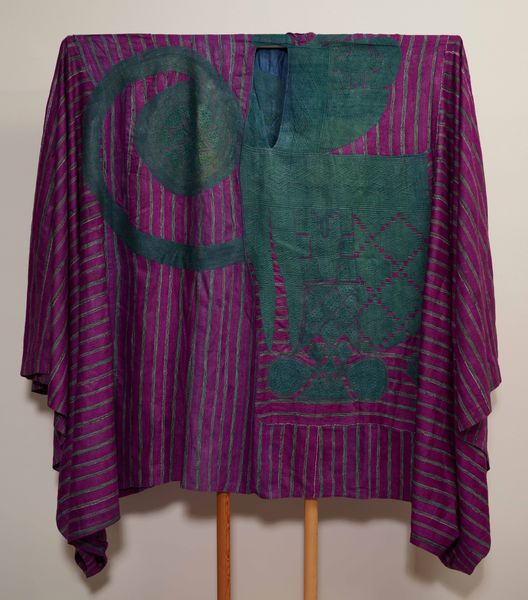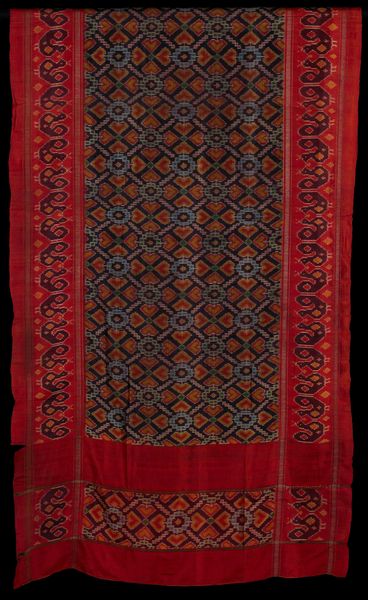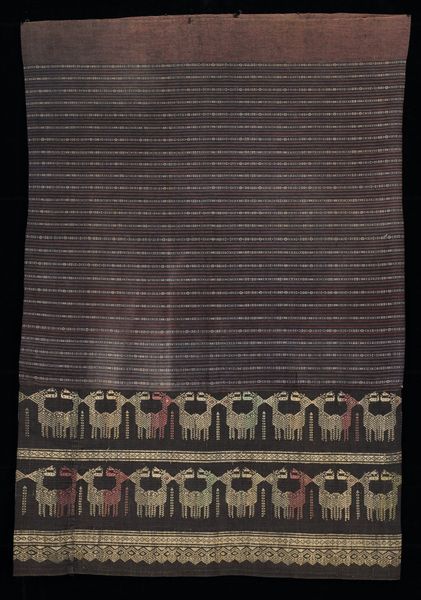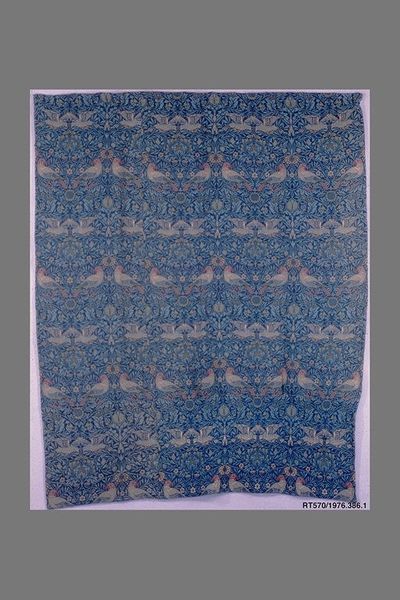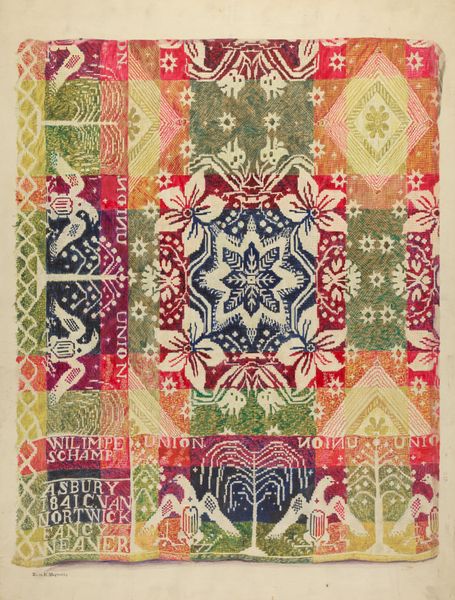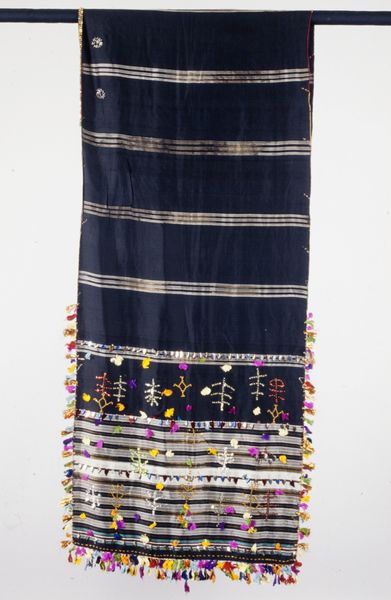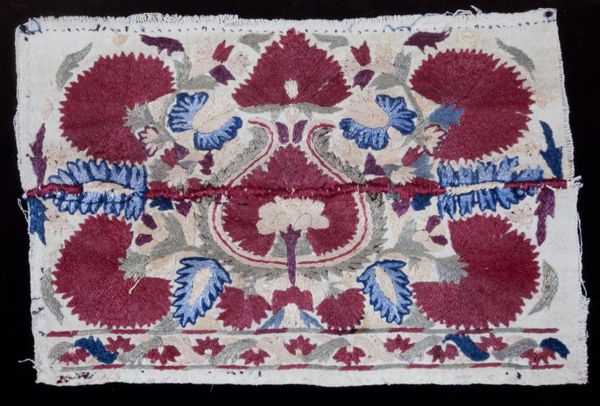
drawing, mixed-media, textile
drawing
mixed-media
decorative element
textile
fashion and textile design
folk-art
fabric design
textile design
decorative-art
Dimensions: overall: 63.6 x 48.1 cm (25 1/16 x 18 15/16 in.)
Copyright: National Gallery of Art: CC0 1.0
Curator: At first glance, it presents such a powerful image of a craft object draped and alive. The detail suggests both painstaking production and perhaps a community effort. Editor: Exactly! What we’re looking at is a drawing of a Jacquard Coverlet from Zoar, likely dating around 1938. The artist is Fritz Boehmer. The medium seems to be a blend – perhaps mixed media on paper? What strikes you about it beyond the initial impression? Curator: The process feels so tangible. One immediately appreciates the technical skill required to produce something with this degree of complex patterning and the visible labour woven into it. It reminds me of the vital roles that women have played in textile production, not only in art but in the economic survival and visual identity of cultures. What does the ‘Zoar’ in "Zoar Jacquard Coverlet" signify, in historical terms? Editor: Well, Zoar was a communal settlement in Ohio founded by German separatists. The textiles they produced, particularly these coverlets, became a key part of their economy and cultural identity. Boehmer's drawing becomes a record of that unique socio-economic history, spotlighting both their industriousness and ingenuity. It really underscores how communities utilized art and craft as tools of cultural expression. Curator: And to continue your point on context – thinking about textiles more broadly: from the sourcing of materials, potentially through complex trade routes, to the weaving itself, it involves so many bodies in unseen and unacknowledged forms of work, both enslaved labor or wage labor. What appears as just decoration also has ties to that, even a simple Jacquard coverlet like this! Editor: It certainly broadens the historical perspective, prompting us to look beyond the aesthetic qualities. The very existence of institutions like museums influences what kind of art is valued, displayed, and studied. Boehmer's artwork, through documenting this object and making it 'art', participates in the weaving together of community, economic context, and memory. Any closing thoughts, about this interesting connection between textiles and folk art, from a material perspective? Curator: I now recognize how such a commonplace item such as textile is imbued with layers of labor, tradition, and artistry and thinking about the process and material differently can definitely change your impression about such works. Editor: And from a historical lens, recognizing its position as a product of both a unique historical community, as well as the document and a preservation effort. Thank you.
Comments
No comments
Be the first to comment and join the conversation on the ultimate creative platform.
